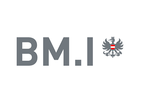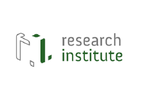
SKIN
TITLE OF THE PROJECT
SKIN - Protecting the outer skin of critical infrastructure
SYNOPSIS
The objective of this project is to increase the security of the outer skin of critical buildings using an intelligent, knowledge-based event detection system with multi-modal sensor and information technology.
SHORT VERSION
Protecting facades, roofs and other parts of the outer skin of buildings and monuments poses increasingly strict requirements on government agencies and organizations engaged in public security. Real-life threat-scenarios such as terrorist attacks or damage targeted towards cultural assets require ever more reliable security systems.
Technically speaking, recent developments have expanded the portfolio of sensor systems that can be used for safety applications. The objective of the SKIN project is to increase the security of the outer skin of critical buildings using an intelligent, knowledge-based event detection system with multi-modal sensor and information technology. In this process, knowledge-based technologies are to take into account anticipated or observed context-based circumstances such as weather or events in and around the building. They then derive more extensive hazard assessments using automated reasoning and information fusion methods.
For monitoring facades over wide areas, area sensors such as those used in video cameras or imaging sensors are particularly suitable. Using alternative technologies such as fan lasers, ultrasound or radar, substantial effort is required to obtain comparable coverage. Among video cameras, it is necessary to distinguish between units for the visible to near infrared range (380 – 780 nm wavelength) and what are known as thermal imaging cameras (8 – 15 μm wavelength).
The optical cameras listed here need light sources that give off light in this wavelength. The sun handles this task during the day, while at twilight and at night, it is necessary to work with artificial light in the visible or infrared range. Furthermore, new technologies such as "time-of-flight" sensors must be considered as additional information sources through the third spatial dimension for high-security applications.
Their suitability, particularly in outdoor applications, must be analyzed more closely with regard to the effects of stray light and weathering.
It must be possible to evaluate the large quantities of data that are accumulated after the fact, as well. This makes it possible to search for events in the video archive without having to view the individual videos and without pre-defining the criteria for a later search during recording. The system is to be designed such that data protection is incorporated into the design and all necessary requirements in this area are fulfilled at a high level of function.
FUNDING SPONSOR
The project is being sponsored within the KIRAS security research funding program by the Austrian Federal Ministry for Transport, Innovation and Technology (BMVIT).
PROJECT PARTNER

FLORIDA
TITLE OF THE PROJECT
Flexible, semi-automated video forensics system for the analysis of mass video data (FLORIDA)
SYNOPSIS
The German/Austrian bilateral project FLORIDA is intended to create a flexible, partially automated system to provide support to government agencies in charge of public safety in evidence gathering, investigation and case resolution after attacks. Using state-of-the-art technologies, the system will have a noticeable impact on the quality of work and working conditions for those employed in this field, because it vastly simplifies the research, processing and analysis of extremely large and heterogeneous volumes of audio and video files.
SHORT VERSION
The most important development goals in the project are: Creating a scalable platform for forensic video analyses on a large scale; defining corresponding interfaces; developing new analysis algorithms and evaluating the entire project with respect to both the requirements from the project partner and the basic legal and ethical conditions researched as part of the project.
Thanks to the scalable, cloud-based architecture, the FLORIDA platform will be capable of processing very large amounts of data from different sources automatically (uploads from witnesses, material from video surveillance and videos from third parties). The system can be dynamically instantiated to ensure the ability to process even large volumes of data (e.g. thousands of hours of video material after a terrorist attack) quickly and efficiently using many computing nodes, which may be cloud-based.
The approach taken in the project is meant to ensure interoperability, which allows investigators to use graphic applications to take advantage of results created by pre-processing the mass video data on the platform. They can then incorporate these results into the investigations. This is shown and evaluated using a graphic application based on the PKE AVASYS platform.
FLORIDA will also research whether and how previously existing video analysis algorithms can be implemented as parallel algorithms and used on the scalable platform. In addition, new algorithms are being developed with the goals of audio analysis (characterization, event detection, synchronization of multiple videos) and object tracking.
We will also work out the legal and ethical requirements that shall be observed for developing this type of platform for forensic video analysis and the use of eyewitness data with respect to EU and Austrian law. An internal evaluation will be carried out to ensure adherence to these basic ethical and legal conditions. This evaluation will cover both the technologies developed and their implementation. Careful handling of all relevant ethical and basic legal problems is a vital component of this process and must be ensured in every phase of the project.
Project homepage: http://www.florida-project.at
FUNDING SPONSOR
The project is being sponsored within the KIRAS security research funding program by the Austrian Federal Ministry for Transport, Innovation and Technology (BMVIT).
PROJECT PARTNER




INNOVATIONEN
Zutrittskontrolle
Bei der Langzeitspeicherung von Zutrittsdaten (Log-Dateien, Buchungen) trafen zwei widersprüchliche Anforderungen aufeinander. Erstens sollten die Log-Dateien unveränderbar und eine Manipulation derselben erkennbar sein, zweitens sollten bei Bedarf alle Daten einer Person gelöscht werden können. Es wurde mit verschiedenen Ansätzen wie z.B. digitale Signatur über Zertifikate experimentiert, letztlich hat sich die Blockchain-Technologie als effizienteste Methode herausgestellt. Dabei erhält jeder Log-Eintrag (Buchung) einen kryptographisch sicheren Hash der vorhergehenden Buchung. Das Problem der Datenlöschung wurde mittels Pseudonymisierung gelöst. In der Logdatei stehen Pseudonyme, welche über eine Datenbanktabelle aufgelöst werden können. Bei einer Löschung wird dieser Tabelleneintrag entfernt. Die Änderungen in der Datenbank werden in einem Änderungslog festgehalten, welches wiederum auf dieselbe Art geschützt ist.
Die Kombination von Blockchain-Technologie und Pseudonymisierung stellt ein Alleinstellungsmerkmal für Zutrittskontrollanlagen dar.






